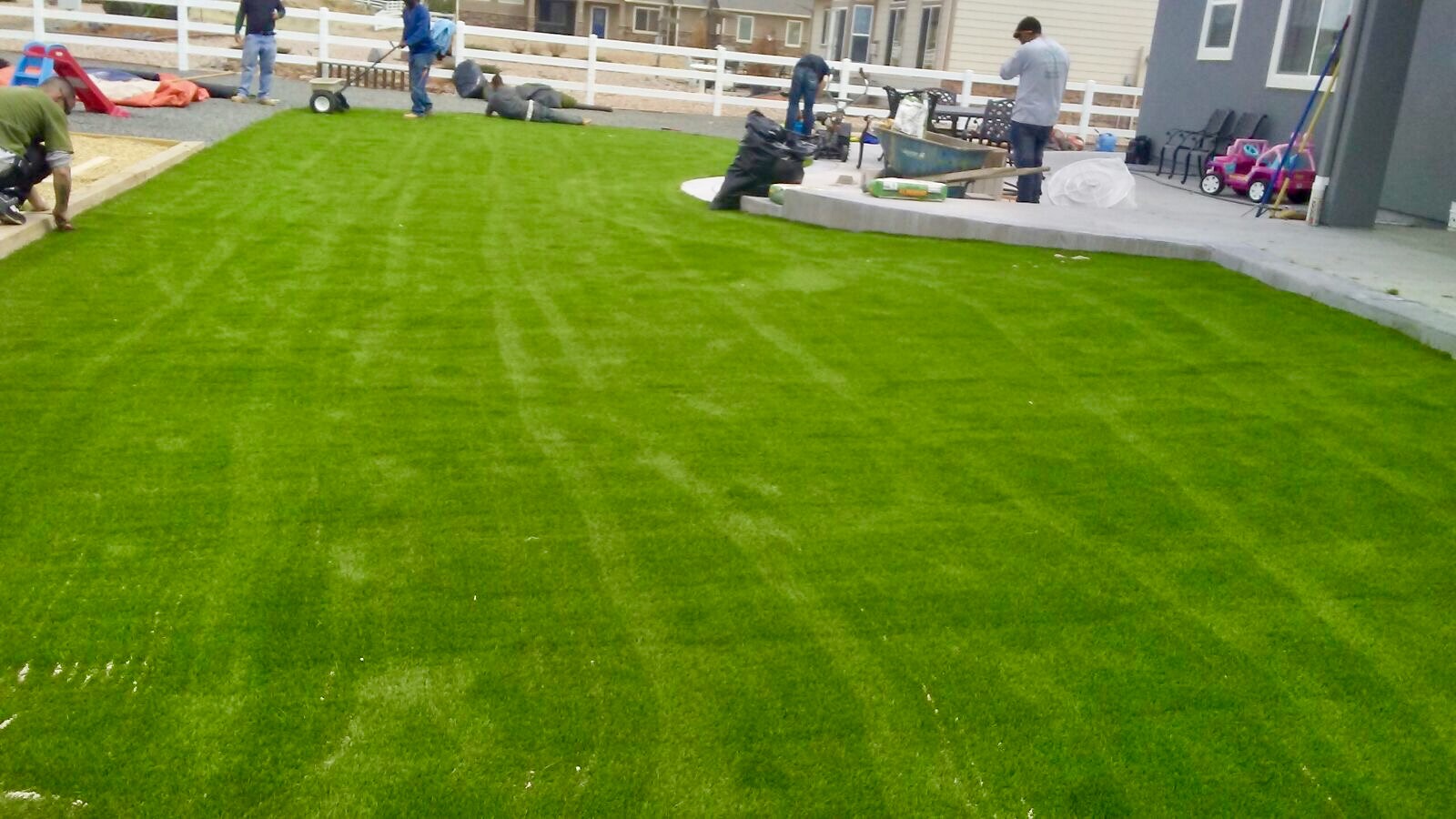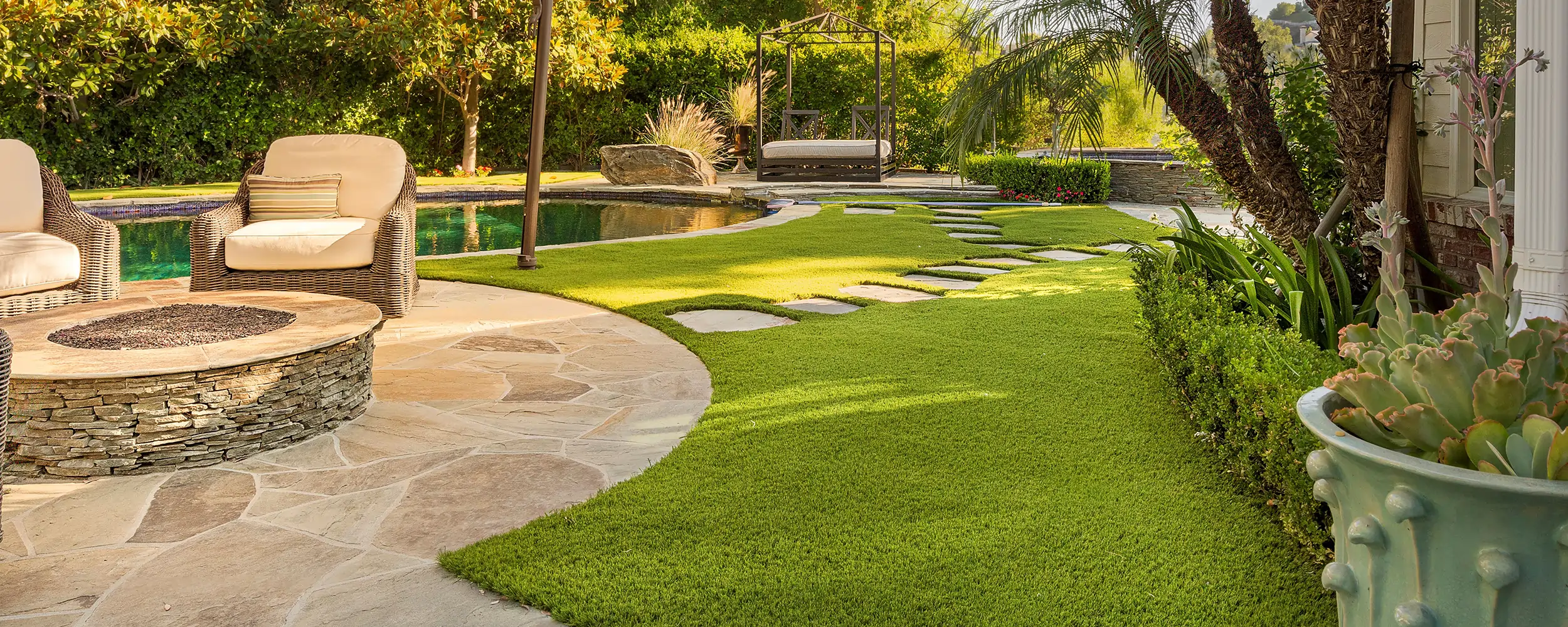Expert Arizona Turf Suppliers Ensuring a Realistic Lawn Alternative
Expert Arizona Turf Suppliers Ensuring a Realistic Lawn Alternative
Blog Article
Explore the Environmental Advantages of Opting for Synthetic Grass Solutions
The adoption of synthetic grass options presents a compelling possibility to attend to pressing ecological obstacles. By substantially decreasing water usage and decreasing the application of dangerous chemicals, these choices not only advertise sustainable landscape design however likewise protect regional ecological communities. The reduced carbon footprint associated with decreased upkeep activities adds to a more sustainable approach to land administration. However, the ramifications of these benefits extend past plain conservation initiatives, questioning about their lasting effect on habitat conservation and overall environmental equilibrium. Checking out these dimensions exposes an intricate interaction worth considering.
Water Conservation Advantages
Among the most considerable benefits of fabricated turf is its ability to conserve water. Typical grass lawns require substantial irrigation, specifically in areas prone to dry spell or water constraints. On the other hand, synthetic grass does not need watering, considerably decreasing the overall demand for water sources. This attribute is specifically helpful in deserts where water shortage is a pressing concern.
By removing the requirement for regular watering, synthetic grass contributes to lasting landscape practices and assists minimize the environmental impact of extreme water intake. Additionally, the conservation of water includes the decrease of runoff, which can cause dirt erosion and river pollution.
Furthermore, the installation of synthetic grass allows home owners and towns to designate water resources a lot more efficiently, focusing on vital usages such as alcohol consumption water and agriculture. The change in the direction of synthetic lawn not only promotes accountable water use yet also lines up with wider ecological objectives targeted at preserving natural deposits.
As areas significantly focus on sustainability, the water conservation benefits of synthetic grass provide a compelling situation for its fostering in household and business landscaping projects.
Reduced Chemical Usage
The transition to man-made lawn significantly decreases the dependence on chemical therapies commonly used in natural grass upkeep. Traditional turf management generally entails the application of herbicides, pesticides, and plant foods to promote development and control parasites. These chemicals can present dangers to human wellness, neighborhood wildlife, and the environment, adding to dirt and water contamination.
In comparison, synthetic grass eliminates the need for these unsafe materials. When set up, it requires very little maintenance, mainly containing normal cleaning and occasional infill replenishment. This reduction in chemical usage not just benefits the prompt atmosphere but additionally adds to broader environmental security. By reducing the launch of synthetic substances into the community, synthetic grass promotes much healthier dirt and water systems.
In addition, the absence of chemical runoff related to artificial grass installations assists shield regional rivers from contamination, sustaining aquatic life and preserving biodiversity. Arizona turf. As neighborhoods increasingly prioritize lasting techniques, choosing synthetic grass provides a sensible solution that lines up with ecological conservation goals. With this change, homeowner can delight in rich environment-friendly rooms without compromising eco-friendly wellness, leading the way for a more sustainable future
Reduced Carbon Impact

In addition, the installation of synthetic grass can cause substantial water conservation. All-natural grass call for substantial amounts of water for irrigation, which not only includes to the carbon impact connected with water extraction and therapy but also stress local water resources. In comparison, artificial turf needs minimal upkeep, calling for no watering, therefore significantly decreasing water usage and its connected energy expenses.
Furthermore, the durability of synthetic grass adds to its reduced carbon influence. With a life-span of approximately 15 years or even more, the demand for constant substitutes is reduced, leading to less waste and lower energy intake in production and getting rid of standard lawn options. In general, synthetic grass offers a lasting option for environmentally aware landscape design.
Environment Conservation
Habitat conservation is an essential factor to consider in the discussion over landscape design choices, specifically when contrasting synthetic grass to all-natural turf. Natural yard yards frequently need considerable maintenance, including the usage of herbicides, plant foods, and pesticides, which can adversely influence local environments. These chemicals can leach right into the soil and rivers, harming indigenous plants and animals and interrupting local environments.
On the other hand, official source fabricated grass offers a chance to lower the environmental footprint of landscape design. By selecting artificial turf, house owners can reduce the disturbance of natural environments connected with standard yard treatment practices. Man-made lawn eliminates the demand for hazardous chemicals, therefore protecting close-by wild animals and maintaining the honesty of bordering communities. In addition, the installment of synthetic grass can bring about the conversion of former turf locations right into more biodiverse landscapes, such as pollinator yards or native plant areas, which can sustain local wildlife.
Eventually, the shift to synthetic grass not only saves water and minimizes maintenance efforts but also fosters a more harmonious relationship in between human tasks and the click for more info natural atmosphere, promoting habitat conservation in the procedure.
Long-Term Sustainability
Long-lasting sustainability is a critical consider examining the advantages of artificial grass over typical lawn lawns. Among one of the most significant advantages of synthetic turf is its durability; it can last approximately 15-20 years with minimal upkeep, whereas natural grass calls for regular reseeding and replacement. This long life minimizes the need for consistent resources, such as water, plant foods, and chemicals, which are important for preserving a healthy turf lawn.
Additionally, synthetic grass adds to a decrease in carbon exhausts linked with yard treatment devices. Typical yards commonly require gas-powered lawn mowers, trimmers, and blowers, every one of which add to air contamination. Phoenix turf companies. In contrast, fabricated lawn eliminates the demand for such devices, advertising a cleaner setting
Additionally, the manufacturing of synthetic lawn increasingly makes use of recycled materials, enhancing its sustainability account. As manufacturers embrace eco-friendly techniques, the environmental impact of synthetic grass proceeds to reduce.

Verdict
The fostering of synthetic grass solutions presents substantial environmental benefits, including significant water preservation, lowered reliance on hazardous chemicals, and a reduced carbon footprint. In addition, synthetic lawn aids in maintaining natural environments by lessening land disruption and promoting long-lasting sustainability via making use of durable materials. Jointly, these elements highlight the possibility of synthetic turf to add positively to environmental wellness and offer a practical option to traditional landscaping methods in a significantly resource-conscious world.
In contrast, synthetic lawn does not require watering, considerably minimizing the total need for water resources. By lessening the launch of artificial substances right into the environment, artificial grass advertises much healthier dirt and water systems.
In addition, the installment of artificial turf can result in considerable water conservation. In contrast, man-made lawn requires very little maintenance, needing no watering, thus substantially lowering water use and its linked energy prices.

Report this page